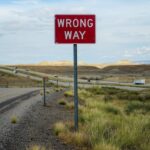This past summer North America has witnessed some of the worst wildfires on record. In California alone, 1,485,353 acres have gone up in flames.
For the longest time, the average person didn’t really give forest fires much attention. Unless one is about to burn through your hometown, we sort of just acknowledged it and moved on.
But in the past decade or so, things have changed. Fires have gotten bigger and the thick cover of smoke has begun to drift our way (both literally and figuratively). Fires are getting worse and the impact it’s having on bigger cities is finally creating some attention where it’s deserved.
The real question is why is this happening?
No, it’s not because people are more careless with their cigarettes or that Smokey the Bear has been taking a break from monitoring the forests. Ironically the reason there are more fires is actually due to the practices of wildfire prevention.
Over the past century, we have become so good at putting out fires that we’ve been hindering a very natural process. For thousands of years, forests have caught fire and regrown — it’s a natural occurrence. And without getting into the details, most forests require a burning in order to sustain themselves.

But what has happened over time is that we have prevented too many fires from doing their thing. This leads to the build-up of deadwood and invasive species. Which then begins to accumulate and accumulate and accumulate until finally, a sudden lightning strike hits the forest that was being “protected”. The fire burns so hot and uncontrollably that it not only burns beyond natural barriers, like hills and waterways, but it also burns off all the topsoil that is needed for proper regrowth.
There are a number of other factors involved and if you’d like to learn more I would encourage you to watch these two videos explaining it in further detail VIDEO 1 / VIDEO 2.
____
Burning Off Your Deadwood
I actually once worked a summer as a wildfire fighter and I learned a lot. But this idea of burning off the deadwood and controlled burns was something that has stuck with me for quite a while. It seems counterintuitive to fight fires by starting more fires, but that’s what works. And when you think about fires from a natural standpoint, it really does make a lot of sense.

We have to maintain things to exist in their proper order if we want them to be sustainable. You can’t just stop a natural part of this world from going it’s course and expect there to be zero consequences.
In the same sense, we as humans are natural beings that require certain processes in order for us to continue in a healthy way. If the world you are seeing is not the world you want, it’s time to examine your values. It’s time to rid yourself of any current presuppositions. It’s time to burn your own deadwood.
And this is hard because it requires some deep introspection. Some examination of what you want in life. It means you have to let go and to sacrifice who you are for who you could become.
But if we wait too long and let the deadwood pile up when this self-examination process takes place, it can be either too much to handle, so we ignore it, or it’s so overwhelming to fix everything at once that we never actually solve any problems.
____
How To Perform Your Own Controlled Burn
One of the best practices these days for preventing fires is to perform controlled burns. These are small burns done during the cooler months of the year and they are monitored heavily in order to make sure they never burn beyond the line. But what they offer is a compromise between humans and nature. We let nature do its thing, and in turn, the fires stay under our control.
In the same way, we can perform controlled burns in our own lives. And this doesn’t have to be done through some intense 10-day off the grid retreat. It can be done in just a few minutes each day. But the key is that it has to be done every single day (or at least every couple days).
Here’s the process:
- When you wake up, ask and answer the following question: What 3 things can I accomplish today that will move me towards my long-term goals? Figure out what those are and work your hardest to make them happen.
- At the end of the day, ask and answer these questions: What was my greatest challenge? And what did I learn from it?
This might not seem like a lot. But if you do this on a regular basis you are providing yourself with a very simple and practical service. You are ensuring that you never stray too far away from where you want to be. You are keeping yourself on course towards a destination you know is worth the sacrifice. Instead of an entire month or year going by without some sort of self-examination (which will cause some seriously dangerous fires to build up) you are creating your own small controlled burns that are manageable. You are always keeping your chaos within fixable range.

(not really related to anything, just an excuse to show a cool picture of myself)
____
Fire Is Good
It can be really tempting to think that forest fires are a bad thing. They cause smoke, they burn down trees, they can burn down houses, they can even kill people. Therefore we need to put an end to them at all costs. But as we have learned over time, there are some severe costs to this mentality. To stop something natural from taking place is an attempt to play God and it’s ignorant to think that we could do so when it comes to nature.
It would be just as ignorant to think that showing up each day without any purpose would lead to a meaningful and worthwhile life. We require introspection. Problems cannot be ignored. We have to burn off the deadwood before it gets to be too much.
Ignoring the value of each day is costly, and for many of us, it’s not until our world has gone up in flames that we might even realize things need to change. Don’t let that day come. Wake up today with intention and go to bed with a lesson.
-Derek
P.S. – If you are looking for a simplified way to guide yourself through this process of controlled burning, The Daily Athlete Journal is a perfect tool to get you started. Not only does it include the two questions mentioned previously, but also a chance to do some deep reflection and create more opportunities for self-awareness. You can learn more about the journal by clicking HERE.





